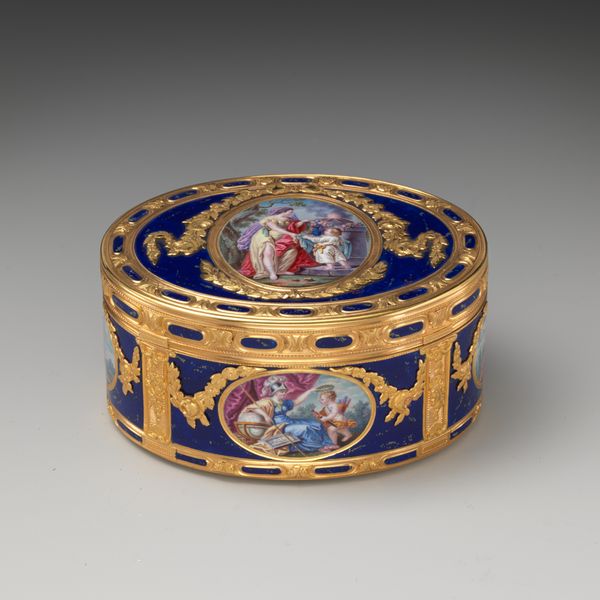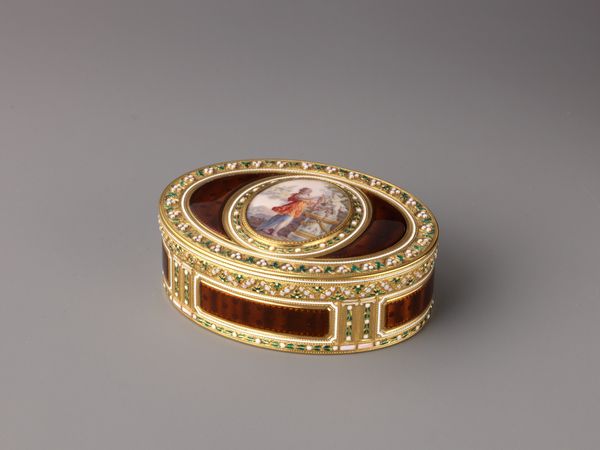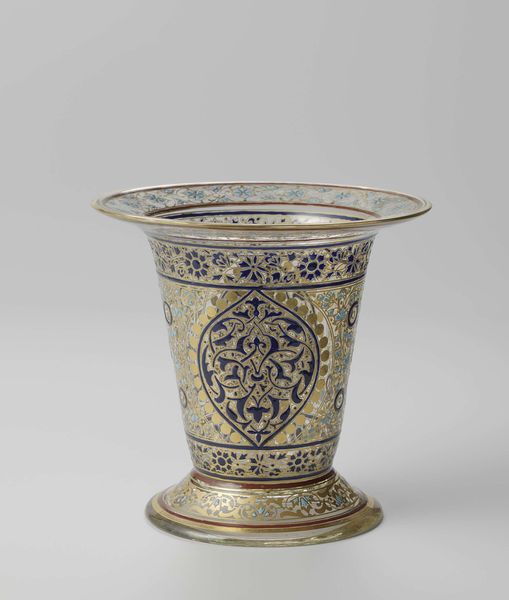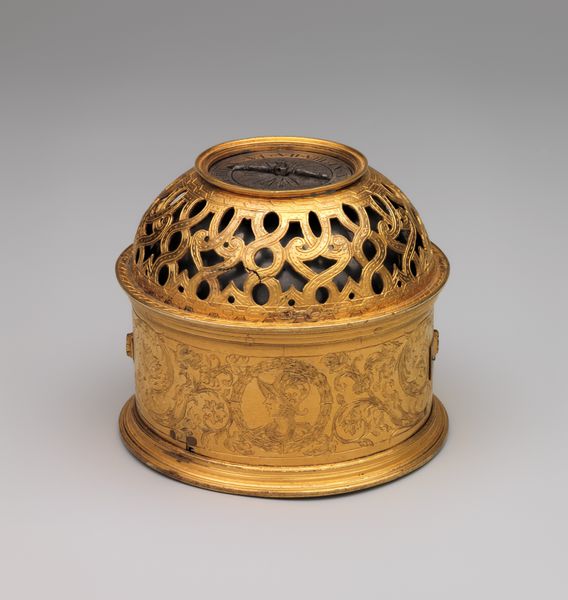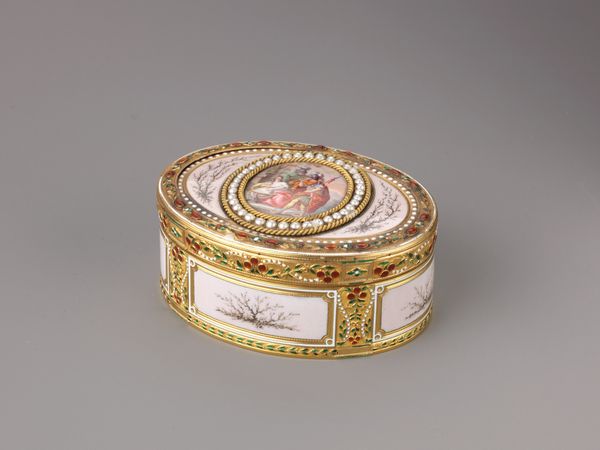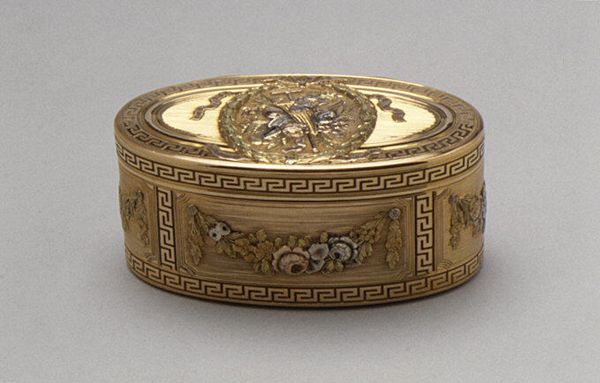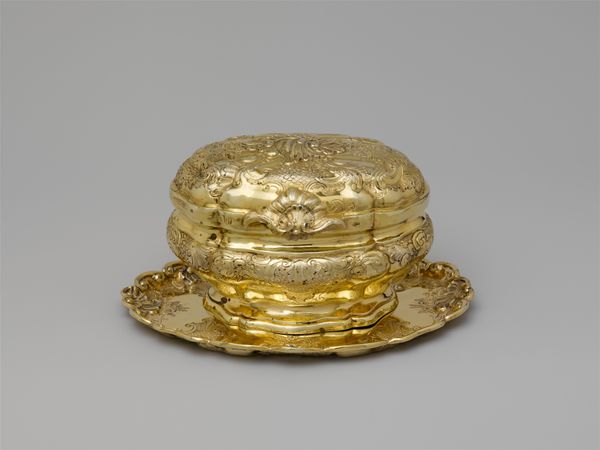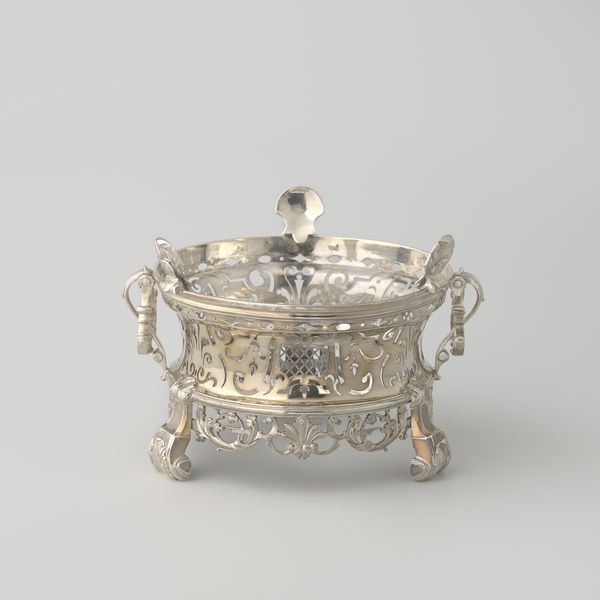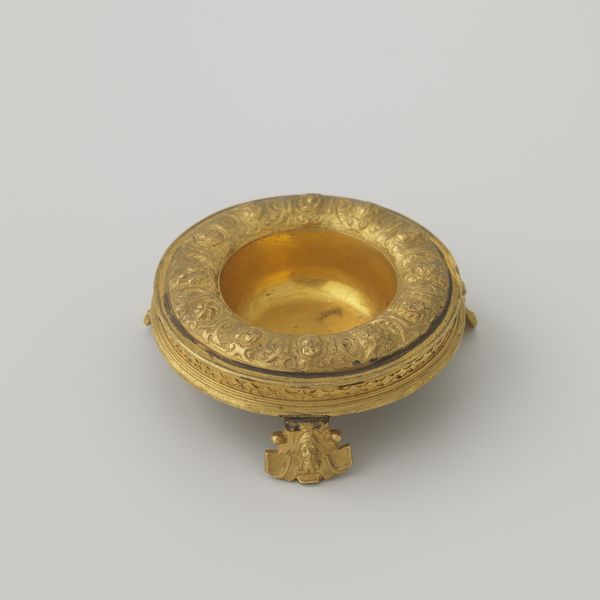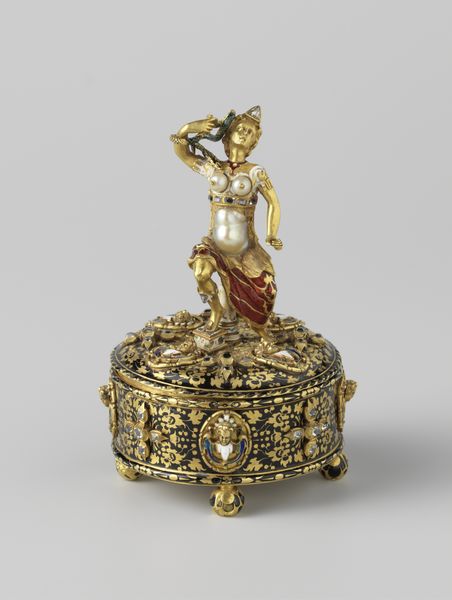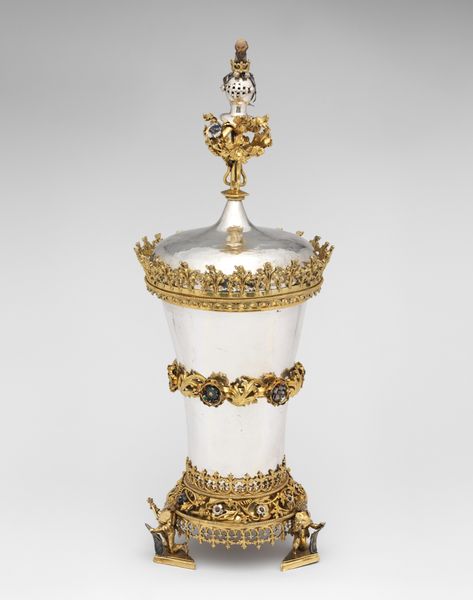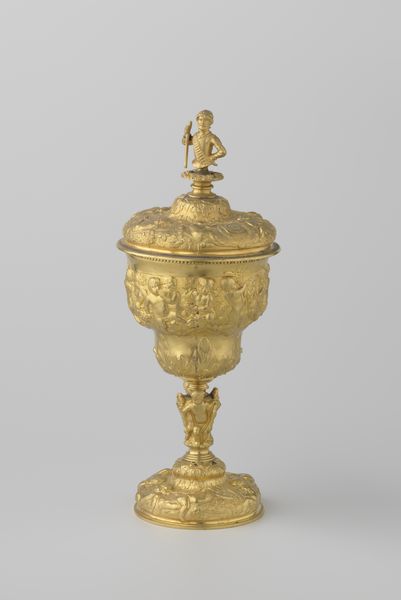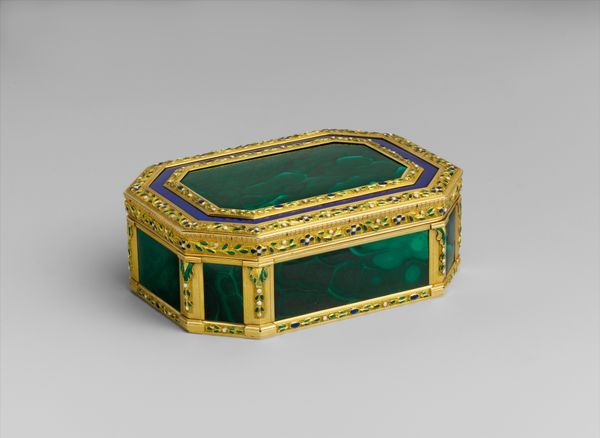
carving, metal, gold, enamel, ivory
#
carving
#
metal
#
gold
#
11_renaissance
#
enamel
#
decorative-art
#
ivory
#
miniature
Dimensions: height 2.9 cm, diameter 6.5 cm
Copyright: Rijks Museum: Open Domain
Curator: Here we have a remarkable example of decorative art from the late Renaissance, circa 1550-1575: a miniature box attributed to Hans Reimer, titled "Doos van goud." It's made from gold, ivory, and enamel, showcasing fine carving and metalworking. Editor: Immediately, what strikes me is its almost jewel-like preciousness, a sense of contained luxury. The contrast between the dark background and the gold ornamentation gives it a certain dramatic flair. Curator: Precisely. Consider the craftsmanship involved: the delicate carving, the application of enamel to highlight details. The production process likely involved specialized workshops, dividing labor between goldsmiths, enamelers, and possibly even ivory carvers, speaking to the guilds' significance at that time. Editor: And what about those motifs? The small portraits with the winged babies encircled with the blue border have obvious classical echoes. Perhaps cherubs from antiquity reimagined? And the floral patterns—are they merely decorative, or do they hold specific symbolic meanings? Curator: They do echo classical ideals, particularly in their striving for beauty and perfection in miniature form. The question of symbolism is valid, and in many ways tied to a potential buyer who wishes to show how worldly and affluent they are by adorning the surface. Editor: So the owner broadcasts something through its very ownership—not merely wealth, but taste and erudition. Given its size, could this be meant as something deeply personal and intimate? Curator: It likely resided among an elite clientele, intended for private devotion or personal adornment. Looking at the meticulous design and choice materials we can see that the cultural values that are communicated highlight one's devotion and appreciation of precious art objects. Editor: It’s remarkable how much history and potential meaning can be concentrated in such a small object. Considering it might be for storing valuable powders, what would people give for something that can bring a symbol of class? Curator: Indeed. Examining its creation and its symbolism has given me a greater appreciation for the world of the renaissance market and elite commissions that fuel creation to this very day. Editor: Yes, thinking about its function, materiality and imagery all tied together enhances my understanding of its purpose. It invites questions about wealth and access which allows us to unpack both meaning and the process behind "Doos van goud".
Comments
No comments
Be the first to comment and join the conversation on the ultimate creative platform.
